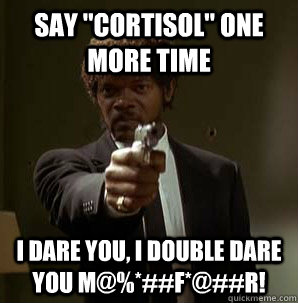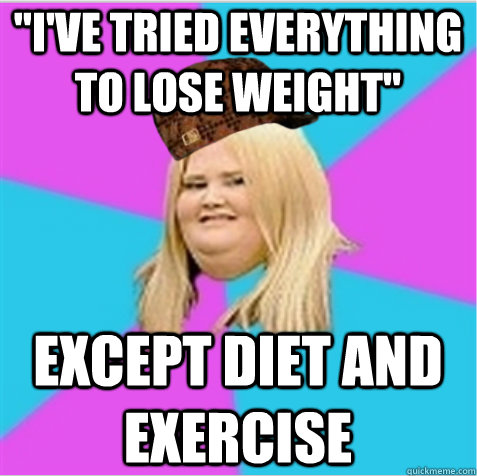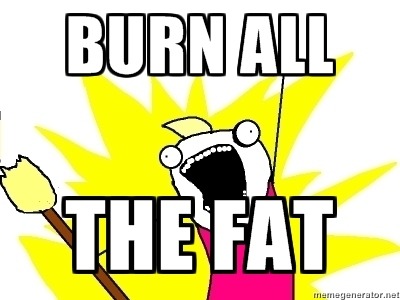When a client or a friend comes to me and asks me how they
can lose weight and look for some easy
tricks to start, I usually always start with five tips I’ve found to help
reduce calories. Now, the most efficient way to lose weight is to have a plan,
try to track your food, and completely take the guesswork out of it. For some
of us, this isn’t feasible. Whether it’s the lack of time or the lack of
knowledge, we look for little tips and tricks that can help us get on the road
to losing weight. Here are the five tips I like to give people:
11. Emphasize Lean Protein
Protein is a very under eaten macronutrient amongst
individuals. While some athletes go overboard and start chugging down protein
shakes left and right, the regular person who’s trying to get in shape more
times than not can add more protein to their diet. In previous articles I’ve
mentioned the benefits of adding more protein to your diet. Some of these
benefits include increased satiety or fullness from a meal, an increased
thermic effect of food, and when in a caloric deficit, a better retention of
lean body mass.
So how do we go about adding more protein to our diet? Focus
on choosing more protein dense meals for your “square” meals of the day. Try
egg whites for breakfast, baked or grilled skinless chicken breast for lunch,
and lean fish or another lean cut of meat for dinner. Fattier choices of
protein are great too when grilled, but also come with more calories because of
their fat content. For example, salmon is an extremely healthy fish, but can
have twice as many calories as tilapia because of the fat content. I try to
consume fattier cuts of meat at least three times a week, but I also make other
adjustments in my macronutrients. Looking for some protein snacks? Some great
options are protein shakes with some water and Quest protein bars.
A meal I often mention to people to try that’s extremely
healthy and filling is a TexMex breakfast bowl:
4 oz 99% Lean Turkey Meat
1 egg
3 egg whites
28g (1 serving) of Sargento’s 2% milk fat mozzarella cheese
And Low-sodium hot sauce
Cook and mix it all together and melt that cheese!
Approximate total macros are:
Calories – 325
Fat – 10g
Carbs – 1g
Protein – 53g
Right there you got a filling meal and it’s full of protein,
great to keep you full for a long period of time. Another option to throw in
there if you want carbs for maybe a pre-training breakfast is a slice of
Ezekial toast topped with a tablespoon of natural peanut butter. Here you’ll be
adding about 175 calories, 8g of fat, 15g of carbohydrates, and another 8g of
protein.
22. Smarter Food Prep
Okay, so now you’re emphasizing lean proteins more.
Unfortunately, when someone gets this drilled in their new healthier style of
eating, they don’t pay attention to how they prepare the food. For example, lets
say you want to have some baked chicken for dinner.
You clean the chicken, and begin to think of different ways
to marinate it. You throw some honey-mustard in there, some butter, and maybe
an oil of some sort to have it nice and juicy, but what people fail to realize
is that these marinades are full of sodium and unnecessary calories. Are there
marinades that are better for you out there? Yeah, of course. Olive oil is an
extremely healthy source of fats, but very rarely does someone use the one-tablespoon
serving size that comes with 130 calories. The way I see it, I’d rather have a 3-ounce serving of an
avocado and eat my calories for the healthy fats than have a tablespoon of
olive oil.
I usually recommend skipping the oils when preparing your meats
and marinades and try low-sodium seasonings. My personal favorites are from the
Mrs. Dash line, and not only are they
sodium free, but some of them actually include some potassium in it. So next
time you cook your lean turkey meat and you want to add some more flavor, put
down the canned red sauce, and pick up the Mrs.
Dash extra spicy seasoning and maybe some crushed red pepper. You get all
the flavor, but none of the calories.
Also while it might be obvious, avoid deep-fried foods and
try to emphasize baked and grilled choices. So next time you go to Outback Steakhouse choose the wood-fire
grilled tilapia and not the pecan crusted tilapia. Easy way to save calories,
and it’s still delicious.
33. Drop The Liquid Calories
One of the most efficient and easiest ways to reduce the
amount of calories you take in is to simply drop the calories you consume
through liquids. This means only water, and no soda, no Gatorade, no Snapple,
nothing with liquid calories. While fruit smoothies from the mall are fine (IF,
and huge if, they’re made with real fruit and not those nasty syrups), drinking
water will provide zero calories.
Diet sodas and diet, zero-calorie drinks are fine, but
generally the healthiest choice is water.
Adding lemon slices to a water bottle is a great way to have flavored
water if you can’t take the “plainness” of water. Look at it this way: I love
Peach Snapple, and would routinely have two or three a day. Three regular PeachSnapples (16 fluid oz.) gives you 480 calories, all coming from 120g of
carbohydrates and 117g of those are sugar! 117g of sugar! And it's not uncommon for people to have a soda during the day and a boatload of coffee creamer too. Make the switch to
water and after a week or two you’ll be amazed by the results.
44. Choose High Fiber, Low Glycemic
Carbohydrates
Blood sugar control is something that really plagues our
country today. Millions of people are suffering from Type 2 diabetes and have
constant issues with blood sugar. One of the best ways to keep your blood sugar
levels stable is to choose high fiber, low glycemic carbohydrates. In a
previous article, I discussed the glycemic index and how it manipulates blood
sugar, but I’ll cover it in brief real quick. The higher the glycemic number
(Scale goes up to 100, pure Glucose being 100) the greater the blood sugar
swing and insulin release. The sudden influx of blood sugar causes us to
release a large amount of insulin, and then after storing and disposing of the
glucose, we get tired, groggy, and then crash. What do we do when we crash?
Reach for more sugary treats, and the never-ending, vicious cycle
continues. A lower glycemic food
choice will have a lower insulin release, and since it’s digested more slowly,
it will keep you fuller longer and provide a more long-term energy source.
Some low glycemic food choices are sweet potatoes,
old-fashioned or rolled oats, brown rice, apples, and whole wheat bread.
Combining your carbohydrates with fats can help lower the glycemic index of the
food as well, as the fats will slow gastric emptying and digestion.
So when people feel fuller and have more energy, they tend
to eat less and move more. Eating less and moving more essentially equals
weight loss.
55. Double Up On Vegetables
My final tip I give to others trying to lose weight and live
a healthier lifestyle is to double up on your vegetables. Vegetables, when
grilled or steamed, are great to provide satiety and control blood sugar. The
vegetables I like to focus on are the leafy green ones, such as broccoli,
asparagus, and spinach. They’re high in fiber and a serving or two can be very
filling. Again, when you’re more full, you hopefully tend to eat less. Vegetables
also have tons of micronutrients to help your body run optimally.
Be careful how you prepare your vegetables too. I know my
family loves to put butter on top of their grilled asparagus, which again adds
unnecessary calories. I like to add seasoning to my spinach or squeeze a lemon
over my broccoli florets. A good trick when eating out too is to skip the
mashed potatoes or French fries and instead get a second helping of steamed
veggies. You’ll still get full, and save a bunch of calories. And don’t be
afraid to ask them for no butter on the vegetables, their job is to make you
happy.
Ultimately, to lose weight you need to expend more energy
than you take in. The best, and most efficient, way to lose weight is to track
what you’re eating and try to slowly consume less until you see the scale move
downwards. I understand if people don’t want to take the time to plan their
caloric intake, but in the end taking out the guesswork is the fastest way to
see results. Either way, employing the five tips mentioned above can really
help increase satiety, reduce your overall caloric intake, and hopefully get
you started to losing weight.








